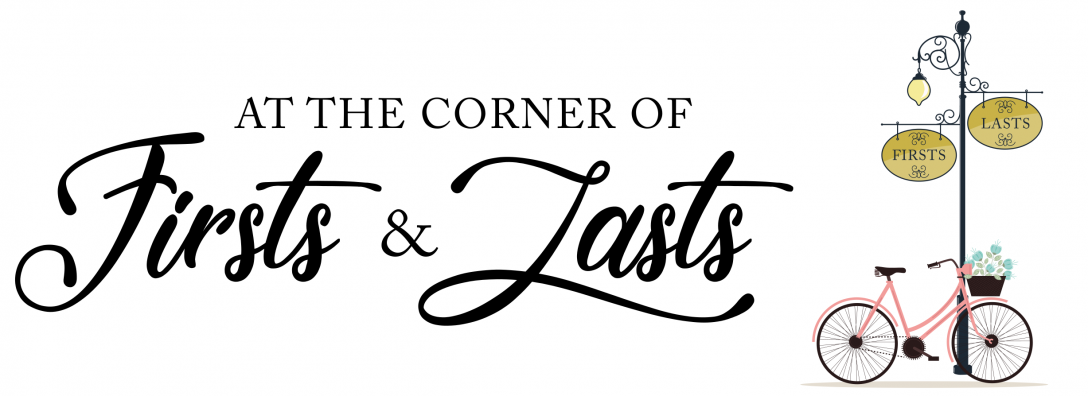**Hello, friend!! I am wearing dresses every day of December for my second year as a Dressember advocate! We’re a community of volunteers who take on the challenge to wear dresses and ties to raise awareness and funds for the end of human trafficking. Below is my Advent Devotional I researched and wrote to go along with my campaign. You can find my Dressember page here.**
Approach: Thank you for landing on this page! Welcome. I encourage to you find a printed Bible or have a web search available, silence anything that may distract you, and take 3 deep breathes. (Pause) Below you’ll be entering into a discussion on forced labor in the garment industry. What do you remember about human trafficking? How often do you encounter clothing ads or emails?
Peace – Advent Week 2
What is forced labor in the garment industry?
In Week 1, we learned about the big picture of the millions of people and billions of dollars that makes of the trafficking industry. We briefly reviewed a variety of situations that could be trafficking including, but not limited to debt bondage, forced labor, bonded labor, child soldiers, sex trafficking, and forced marriage. Dressember and their partner organizations work with victims in all of these areas. My convictions and research have led me to focus more on forced labor within the garment industry, so that is what we will be looking at from here on.
The International Labour Organization (ILO) reported in 2016 that of the 40.3 million trafficked people, 24.9 million were in situations of forced labor (Global Estimates, 2017). The ILO defines forced labor as “forced to work under threat or coercion as domestic workers, on construction sites, in clandestine factories, on farms and fishing boats, in others sectors, and in the sex industry” (Global Estimates, 2017). Of the 24.9 million in forced labor, 16 million in the private economy in 2016 were in debt bondage, a situation that 70% of adults in the manufacturing industry find themselves in (GE, 2017). 15% of forced labor is in manufacturing. I would venture to add that the garment industry also covers some of the agriculture industry (11% of forced labor) with products such as cotton (GE, 2017). Forced labor is a criminal offense. Forced labor is more than sub-standard or exploitative working conditions. It is indicated by restrictions on workers’ freedom of movement, withholding of wages or identity documents, physical or sexual violence, threats and intimidation or fraudulent debt from which workers cannot escape (ILO). It comes down to the relationship between the employer and the employee. Two signs that the relationship may be trafficking are “involuntariness” on the side of the employee, and “menace of penalty” on the side of the employer (ILO).
The garment industry demands millions of workers because of Fast Fashion. Fast fashion “[refers] to garments and pieces of clothing that are made to be cheap and disposable” (McCune). The garments are offered at low prices and have a quick production turn around to stay on top of trends. Brands “subcontract the manufacturing of their garments, offering the job to the lowest bidder” (McCune). “Buyer-driven chains” are dominated by large retailers and “production-driven-chains” are dominated by manufacturers; both work faster and faster, requiring “extensive use of subcontracting globally” (Delahanty). Because brands aim to subcontract to the cheapest bidder, they are “responsible for choosing to outsource to factories complicit in using slave labor” (Van Husen). The “brands don’t own factories,” but they do choose the cheapest bidder (Van Husen). The bidder then determines how the labor is paid and the conditions of the workplace, leaving brands ignorant of their supply chains tiers.
We’ll keep going deeper into the garment industry throughout December.
(Pause) Take 2 deep breathes. Thank you for reading an introduction on forced labor. What is something you learned about forced labor or garment workers? What is something that surprised you? What do you still have questions about? (Pause)
I invite you to read on when you are ready.

Open a Bible or web search to Psalm 104. Read through the chapter, aloud if you can.
How can we establish peace in the fast production of the garment industry?
Creator God established His kingship over His creation. His kind of rulership was based on providing “all that the world might require for its joyous life and secure well-being” (Brueggemann 27). He provided in abundance for the needs of creatures. In the daily act of eating, creatures were sustained. The Lord was nurturer and nourisher. The Lord was “known, named, confessed, and celebrated in the doxologies of Israel” (Ps. 104:14-15, 27-28; 145:15-16) (26). The Lord’s rulership is one that gives in daily abundance. In churches still today, we “[find] God’s presence peculiarly and concretely in the bread and wine—the staples of peasant food” (28). God’s intention was to supply abundance for daily needs. Daily nourishment is not a lavish gift, but it is appropriate to fulfill the need. In the Garden, the Lord set limits on the man and woman, telling them they could eat from any tree in the Garden, except one (Gen. 2:16-17). He “limits the consuming propensity of the human creatures” from the beginning (38). Adam and Eve had an abundance of fruit to meet their daily needs, yet they reached for more, indulging themselves beyond what God had provided for them.
Take a look back through Psalm 104. What do you see God creating?
Creatures were to receive and recognize their Creator. Creatures received their daily provision from God and were satiated. There were “no unmet need[s] or desire[s]” in the creation design (Brueggemann 30). Satiation then turned their attention back the One who provided—that they would bless His name. With attention on God, “every illusion of self-sufficiency” dissipated (31). Remembrance of God who provided truly fulfilled. No doubt, this Provider God was the reason for satiation. When Adam and Eve indulged beyond the abundance God had given them in the garden, they forgot who had met all their needs before. They exalted themselves and praised their seeming self-sufficiency.
Later in the biblical narrative, when God made His covenant with the people, God set boundaries for consumption (Exod. 20:4, 17). He also arranged a calendar for His people around Sabbath days and years (31). These communal weekly and yearly kingdom rests were a time to remember who had met their needs in abundance. The kingdom rests relieved the enslaved of their work and the Pharaohs from their anxiety of not having enough, even when living in abundance (Amos 8:4-5) (32). Sabbath is a time for remembering that all that is desired is fulfilled in God and His provision. Failure to keep Sabbath results in “loss of self, loss of land, and finally loss of viable creatureliness” (32). The land will eventually reject the exploiters. Israel was placed in exile from their land because of their failure to keep the Sabbath calendar the Lord had structured their society around.
Turn once again to Psalm 104. Where do you see God’s provision and abundance?

This week, I invite you to find peace in the abundance of creation and your provisions in life. As we saw in Genesis and in Exodus, the Lord sets limits on our temptations for consumption. Are you ever waiting in line for something and check your phone? Do you use mealtimes to catch up on ad-filled social media? Consider using these moments to cultivate a peace in abundance. Breathe deeply and rest in the moment you are in. Our fast-paced demands have built industry giants racing to the bottom line. “Buyers set the terms of what is to be produced, how fast, and at what price,” instead of the manufacturers who hire and determine the conditions for their workers (WIEGO). The buyers, however, are not often near the communities where their products are grown, mined, milled, woven, dyed, cut, and sewn. “The hidden and the forgotten dwell in the shadows of our clothes;” they are the unnamed, faceless makers of our products (Sommers in Index 2020). Let’s cultivate lives of remembrance that offer thanksgiving for abundance instead of racing for fast consumption. Slow down your purchases.
Lay down your anxiety to that you don’t have it all. Dear child, you are provided for in abundance. Rest.
In peace,

Sources Above:
Brueggemann, Walter. “Options for Creatureliness: Consumer or Citizen.” Horizons in Biblical Theology 23 (2001): 25–50.
Delahanty, Julie. “A Common Thread: Issues for Women Workers in the Garment Sector.” The North-South Institute. Women in Informal Employment: Globalizing and Organizing. Accessed November 30, 2020. http://www.nsi-ins.ca/wp-content/uploads/2012/10/1999-A-Common-Thread-Issues-for-Women-Workers-in-the-Garment-Sector.pdf.
“Fashion Transparency Index 2020.” Fashion Revolution. Fashion Revolution, April 21, 2020. https://issuu.com/fashionrevolution/docs/fr_fashiontransparencyindex2020?fr=sNmI5NzYxMDk0OA.
“Garment Workers.” WIEGO. WIEGO. Accessed November 30, 2020. https://www.wiego.org/garment-workers.
Global Estimates of Modern Slavery: Forced Labour and Forced Marriage. Geneva: International Labour Organization and Walk Free Foundation, 2017. https://www.ilo.org/wcmsp5/groups/public/—dgreports/—dcomm/documents/publication/wcms_575479.pdf
McCune, Allison. “If I Buy a Piece of Clothing, How Much Does the Worker Receive?” Dressember. Dressember, December 24, 2019. https://www.dressember.org/blog/dressemberreadingday24.
“Profits and Poverty: The Economics of Forced Labour.” International Labor Organization. International Labor Organization, 2014. https://www.ilo.org/wcmsp5/groups/public/—ed_norm/—declaration/documents/publication/wcms_243391.pdf.
Van Husen, Madeline. “How Likely Is It That My Clothes Were Made by People in a Slavery Situation?” Dressember. Dressember, December 23, 2019. https://www.dressember.org/blog/dressemberreadingday23.


[…] In week 1, we looked at the big picture of human trafficking and a big perspective on hope. In week 2, we looked at the meaning of forced labor in the garment industry and the peace we should pursue […]
LikeLike
[…] In week 1, we looked at the big picture of human trafficking and a big perspective on hope. In week 2, we looked at the meaning of forced labor in the garment industry and the peace we should pursue […]
LikeLike
[…] In week 1, we looked at the big picture of human trafficking and a big perspective on hope. In week 2, we looked at the meaning of forced labor in the garment industry and the peace we should pursue […]
LikeLike